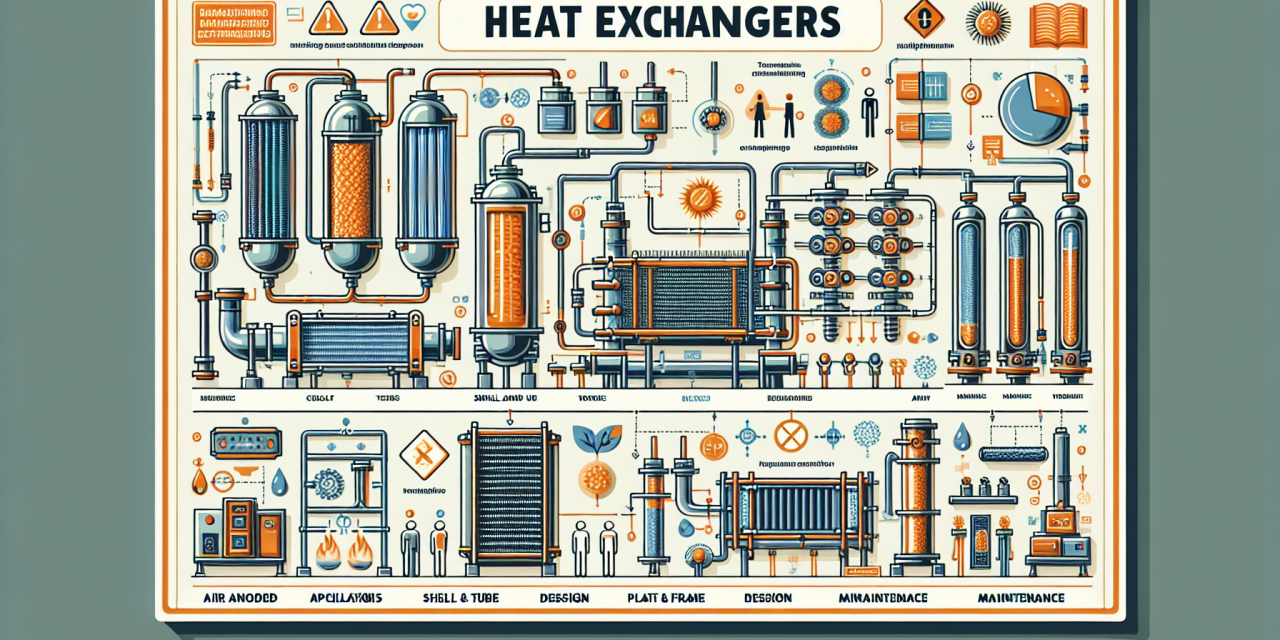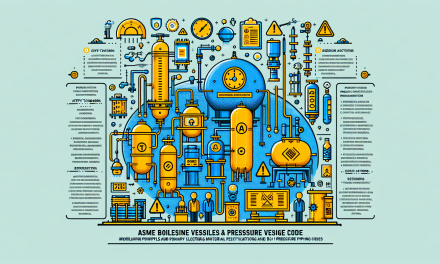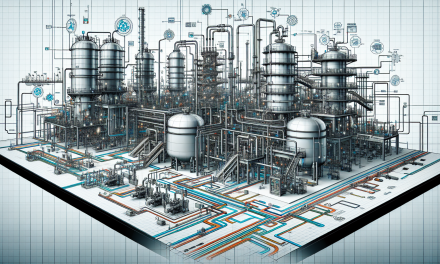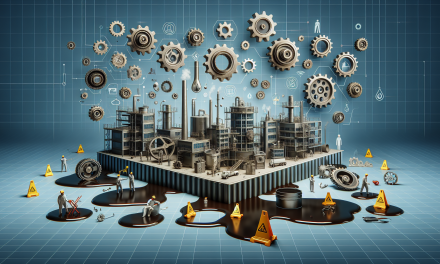Table of Contents
- Introduction
- Types of Heat Exchangers
- Applications of Heat Exchangers
- Designing Heat Exchangers
- Operating Principles
- Maintenance of Heat Exchangers
- FAQs
- Conclusion
Introduction
Heat exchangers play a crucial role in various industries by facilitating efficient heat transfer between two or more fluids. This process significantly impacts energy efficiency and operational effectiveness. Understanding how heat exchangers work, the different types available, their applications, design considerations, and maintenance practices can empower professionals to optimize their use and ensure longevity. So, let’s explore this essential component in detail.
Types of Heat Exchangers
Heat exchangers come in various types, each designed for specific applications. Broadly speaking, they can be classified into the following categories:
1. Shell and Tube Heat Exchangers
This type consists of a series of tubes, where one set of tubes carries the hot fluid, and the other carries the cold fluid. The design allows for high pressure and temperature capabilities, making it suitable for industries like oil and gas.
2. Plate Heat Exchangers
Plate heat exchangers use thin, corrugated plates to facilitate heat transfer. Their compact design allows for high thermal efficiency, making them ideal for food and beverage processing.
3. Air Cooled Heat Exchangers
These utilize air to cool the fluid, often found in power plants and HVAC systems. They are a great choice when water resources are limited.
4. Fouling Resistant Heat Exchangers
Designed to minimize fouling, these heat exchangers are particularly beneficial in applications where scaling may occur, like in seawater cooling.
5. Double Tube Heat Exchangers
This design features one tube inside another, making it simpler to clean. It is particularly useful in medium-pressure applications.
Applications of Heat Exchangers
Heat exchangers find applications across many fields due to their versatility. Some of the prominent domains include:
1. HVAC Systems
In heating, ventilation, and air conditioning systems, heat exchangers regulate temperatures, improve air quality, and optimize energy consumption.
2. Chemical Processing
They are vital in chemical plants for district heating and cooling processes, ensuring optimal reaction temperatures.
3. Power Generation
In power plants, heat exchangers help recover waste heat, thereby improving overall efficiency.
4. Food and Beverage Industry
Here, they assist in pasteurization and cooling of products, ensuring safety and quality.
5. Oil and Gas Industry
They are used extensively for cooling and heating processed fluids, enhancing recovery rates of hydrocarbons.
Designing Heat Exchangers
The design process for a heat exchanger involves various considerations to ensure optimal performance:
1. Heat Transfer Coefficients
Understanding the heat transfer coefficients of the fluids involved is essential for calculating the required surface area for efficient heat exchange.
2. Pressure Drop
Designers must consider the pressure drop across the system to avoid inefficiencies. Selecting an appropriate design minimizes energy loss.
3. Material Selection
Choosing the right materials that can withstand the operational conditions—temperature, pressure, and corrosiveness—is crucial for durability.
4. Fouling Factors
Taking fouling into account during the design phase will help in extending the operational lifespan of the heat exchanger.
5. Optimization and Simulation
Utilizing modern software for simulation and optimization can significantly enhance the design process, allowing for adjustments before fabrication.
Operating Principles
Understanding the operational principles of heat exchangers greatly enhances their efficiency:
1. Counter-Flow vs. Parallel-Flow
In counter-flow heat exchangers, the hot and cold fluids move in opposite directions, maximizing heat transfer. On the other hand, parallel-flow systems have both fluids moving in the same direction, which can be less efficient.
2. Temperature Profiles
Monitoring the temperature profiles across the heat exchanger allows for adjustments to maintain optimal performance levels.
3. Flow Arrangement
Choosing the correct flow arrangement based on application requirements can maximize heat exchange and operational efficiency.
Maintenance of Heat Exchangers
Regular maintenance is critical to prolonging the life of heat exchangers and ensuring their efficiency. Here are some key practices:
1. Routine Inspections
Conducting regular inspections allows for the early detection of fouling or erosion. This step is essential to maintaining optimal performance.
2. Cleaning Procedures
Implementing cleaning procedures, whether chemical or mechanical, helps in removing scale and debris that can obstruct heat transfer.
3. Monitoring Performance Metrics
Establishing a set of performance metrics helps in identifying inefficiencies. When deviations from normal operations occur, they can be addressed quickly.
4. Training Staff
Investing in training for operational staff ensures they are aware of best practices and maintenance procedures. For instance, consider attending [Heat Exchanger Design & Maintenance Training Course](https://mercury-training.com/c/6040.html) to enhance your team’s knowledge.
5. Replacement Planning
Developing a plan for components that may need replacement before complete failure occurs can mitigate downtime and operational disruptions.
FAQs
Q1: What factors affect the efficiency of a heat exchanger?
The efficiency is mainly affected by the flow arrangement, temperature difference between the fluids, the heat transfer coefficient, and the surface area of the heat exchanger.
Q2: How often should heat exchangers be maintained?
Maintenance frequency depends on the operating conditions and the specific application, but typically, heat exchangers should undergo routine inspections every six months to one year.
Q3: Can fouling be completely avoided in heat exchangers?
While it may not be possible to entirely avoid fouling, effective measures like proper material selection and modern cleaning techniques can significantly reduce its impact.
Q4: What are some common problems encountered with heat exchangers?
Common issues include fouling, corrosion, leaks, and inadequate heat transfer, all of which require proactive monitoring and maintenance strategies.
Conclusion
Mastering heat exchangers is essential for ensuring efficient heat transfer in various industries. By understanding the types, applications, design considerations, operational principles, and maintenance practices, professionals can greatly enhance operational effectiveness. Furthermore, referencing insightful resources such as Achieving Operational Excellence: Essential Strategies for the Process Industry and Elevating Maintenance Management: A Comprehensive Guide will deepen knowledge on these subjects. Moreover, ongoing education in this area is vital; thus, consider exploring Heat Exchanger Design & Maintenance Training Course to stay updated on current best practices and innovations. Investing in understanding heat exchangers today can yield significant benefits for tomorrow’s operations.





